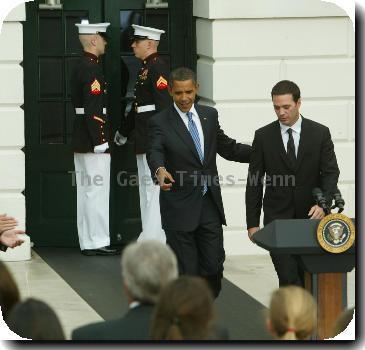Regulators fend off complaints that strict bank requirements impede lending to businesses
By Marcy Gordon, APFriday, February 26, 2010
Regulators: Strict bank rules don’t impede lending
WASHINGTON — U.S. regulators fended off complaints Friday from lawmakers and small business owners that overly strict rules for banks have prevented crucial credit from flowing to where it is needed most.
U.S. bank lending last year posted the steepest drop since World War II, with the volume of loans falling by $587.3 billion, or 7.5 percent, from 2008. And some lawmakers are laying the blame on the policies of federal regulators.
At stake at a House hearing was a $30 billion small-business lending fund for banks proposed by President Barack Obama. Criticism echoed that while big Wall Street banks got multibillion-dollar bailouts, community banks that played no role in stoking the financial crisis have been subjected to overly strict directives that are squeezing credit for local businesses.
Martin Gruenberg, the No. 2 official of the Federal Deposit Insurance Corp., disputed accusations that the agency has discouraged banks from extending loans to small business and for commercial real estate.
The FDIC gives banks “considerable flexibility” in decisions to extend loans, Gruenberg said. “We do not instruct banks to curtail prudently managed lending activities.”
Federal Reserve Gov. Elizabeth Duke said the central bank and other financial regulators have called on banks to meet the needs of creditworthy borrowers.
Small businesses are seen as a linchpin for the recovery, with the potential to expand and soak up some of the nearly 10 percent unemployment that has ravaged the country and preoccupied Congress.
A House committee chairman urged the Obama administration to work with lawmakers seeking to send federal bailout money directly to small businesses rather than through banks.
Rep. Barney Frank, D-Mass., head of the House Financial Services Committee urged the administration to work on legislation with Rep. Nydia Velazquez, D-N.Y., who heads the Small Business Committee.
Congress must approve the small-business fund proposed by the administration, which would be open to banks with $10 billion or less in assets.
Velazquez and other lawmakers want the $30 billion from the bailout program sent directly to the federal Small Business Administration. It would then decide which businesses should get loans.
Velazquez said a more direct approach is needed to get credit where it is needed.
“That does not mean doing more for financial institutions and expecting the benefits to trickle through to small firms,” Velazquez said. “Taking $30 billion and simply handing it to banks — in the hopes that they will make loans — is not sound policy.”
Herbert Allison, the assistant Treasury secretary for financial stability, insisted that channeling the money to banks “is not a cost to taxpayers; it’s an investment.” Allison said the bulk of it is expected to be repaid to the government over time, as happened with the $700 billion bailout program for financial institutions and automakers put in at the height of the crisis in late 2008.
Karen Mills, the head of the Small Business Administration, said the agency lacks the trained personnel and infrastructure to handle such a massive loan program directly.
Banks “can get the money to businesses quickly,” Allison testified. But Duke, the Fed governor, said banks aren’t willing to take the risk to lend and the money should go instead to the SBA.
Rep. Spencer Bachus of Alabama, the Financial Services panel’s senior Republican, questioned injecting billions more into a federal agency.
What is keeping banks from lending to businesses, he said, are the strictures that bank regulators are imposing on them.
“We hear this every day” from community bankers, Bachus said. “I had three yesterday.”
Stephen Andrews, president and CEO of Bank of Alameda in California, told the lawmakers: “The reality is they’re making it very tough for community banks to lend.”
While businesses are finding credit hard to obtain, losses are mounting on loans for commercial real estate like stores and office complexes, as buildings sit vacant and builders default. A cascade of hundreds of billions in losses on the loans could deepen the hurt for regional banks and quicken the pace of bank failures — which reached 140 last year.
Tags: Barack Obama, Geography, Government Regulations, Industry Regulation, North America, Small Business, United States, Washington



